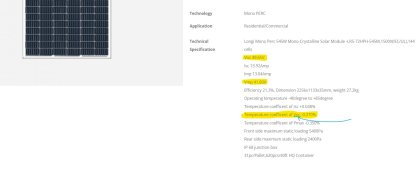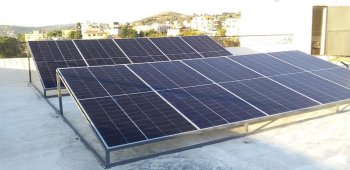BeirutSolar
New Member
- Joined
- Sep 8, 2021
- Messages
- 37
I'm glad to hear you've upgraded your capacity bank as of now. 15kWh is a great start, i guess you know over the course of a few months how it goes, and pick it up from there.Thanks BeirutSolar, yes i changed to 20 panels 470W and increased battery to 15kwh. I still have more than i use during peak hours but it is better than original configuration.
Also my area has fog on many summer days between 1-5pm so i am guessing i will max at 40kwh/day.
On a side note, may i know where is this installation located? i ask because i'm curious about the fog in the afternoon, is it an island of some sort?
i would almost guarantee your array can deliver 50-65kWh on normal sunny days had i not known your fact above, hence my question about the location.






